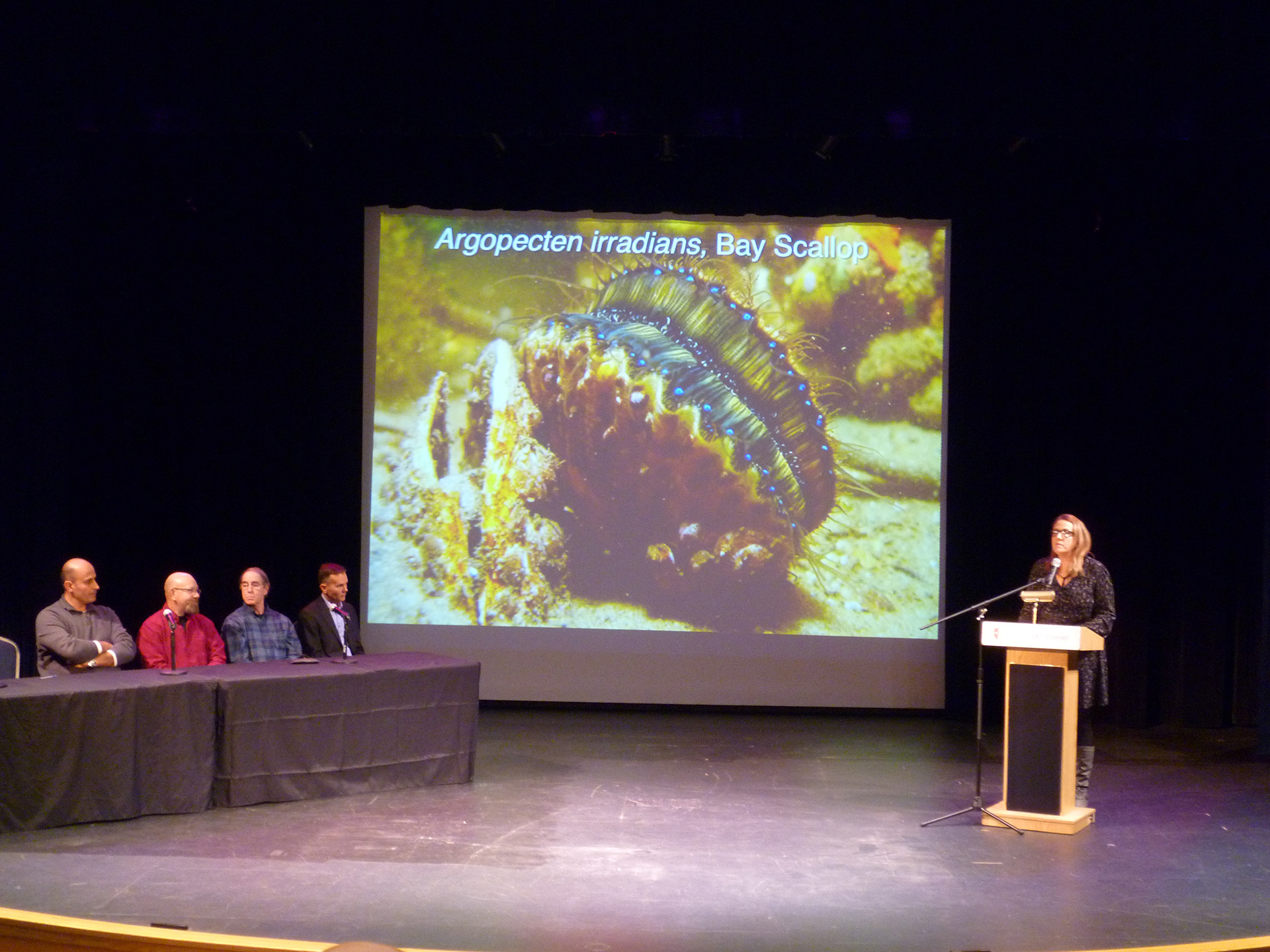Scallop Die-Off Prompts Symposium


On Friday, December 6, scientists, students, and concerned citizens gathered in the Avram Theatre on the Stony Brook Southampton campus with one thing in mind — scallops.
Dr. Christopher Gobler, professor of marine science at Stony Brook University and director of the New York State Center for Clean Water Technology, was one of the speakers. “As it turns out, as we’re all aware, there was a very unfortunate environmental occurrence in the Peconic Estuary this fall,” he said. “Tonight is about getting out the facts.”
The “environmental occurrence” that Dr. Gobler referred to is climate change. The scientist panelists were proficient in their knowledge of scallops — Dr. Bradley Peterson, Dr. Bassem Allam, and Dr. Stephen Tettelbach. And the fact is that the scallops are dying off.
The Peconic Bay Scallop is the most iconic fishery on eastern Long Island. From the 1960s through 1985, the Peconic Estuary boasted the largest individual bay scallop fishery on the east coast. While harmful algal blooms caused the collapse of the fishery at the end of the 20th Century, recent restoration efforts had significantly improved landings. Unfortunately, a catastrophic environmental event caused mass mortality among bay scallops during the late summer and early fall of 2019. The opening of the bay scallop season in November made it clear this die-off was widespread and near complete among harvestable scallops in most regions, leading to great concern regarding the cause of this event as well as the impacts on the economy of eastern Long Island.
On the very same day as this symposium, Governor Andrew Cuomo made a request that the U.S. Department of Commerce issue a disaster declaration for the Peconic Bay scallop fishery, further proving the urgency of the event.
“The unexpected and sudden loss of the bay scallop resource represents a total collapse of this important commercial fishery and a devastating financial hardship for fishermen and maritime businesses that warrants immediate need of disaster relief to the industry,” Cuomo wrote.
Dr. Gobler noted Cuomo’s efforts, stating that “the governor’s support of New York State fisheries has been
remarkable.”
The question is: Why are the scallops dying off? Dr. Gobler believes that a combination of low oxygen, high temperatures, and stress during the spawning season likely were contributing factors.
“The four horsemen of the ocean climate-change apocalypse,” as Dr. Bradley Peterson called it. “Warming, hypoxia, acidification, and harmful algal blooms. It is important to think of the co-occurrence of these.”
With this perfect storm causing the scallops to vanish, it is through restoration efforts driven by institutions such as Stony Brook University’s New York State Center for Clean Water Technology, and continuous funding, that Dr. Gobler and his colleagues are able to continue to find a solution, keeping baymen on their boats and scallops in the seas.
news@indyeastend.com









